
The Bottom Line
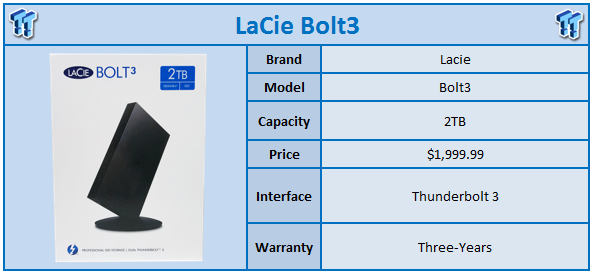
Thunderbolt 3 is poised to take center stage moving forward, and there is no better place to start our journey here at TweakTown than with the LaCie Bolt3.
The Bolt3 is quite a unique device, sporting a single 2TB capacity option. Its design comes from Neil Poulton, a name synonymous with LaCie at this point. Internally, this solution is based around Thunderbolt 3 technology with two ports of connectivity and the ability to daisy-chain up to five devices.
The performance of the LaCie Bolt3 is setup to hit 2800 MB/s read and 1300 MB/s write while supporting AES 256-bit encryption via LaCie Private-Public software. On the subject of software, LaCie too provides backup software for macOS via Intego Backup and Windows machines via Genie Backup. Compatibility includes both OS X 10.10+ and Windows 8+.
The MSRP of the 2TB LaCie Bolt3 comes in at $1999.99 with a three-year warranty.
The Hardware

Packaging shows off the design with capacity at the top right.
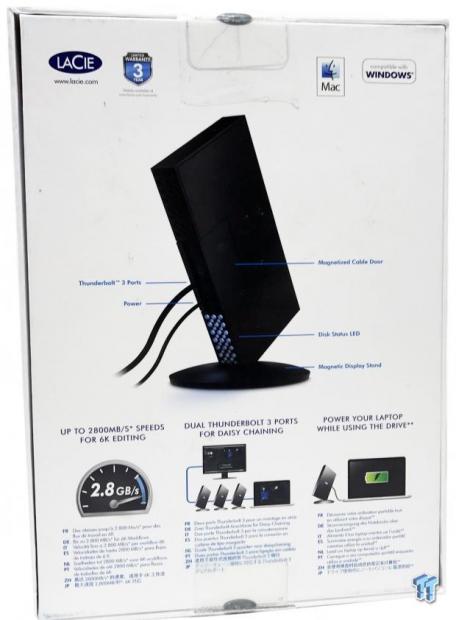
The backside houses specifications at the bottom along with a diagram of the device above
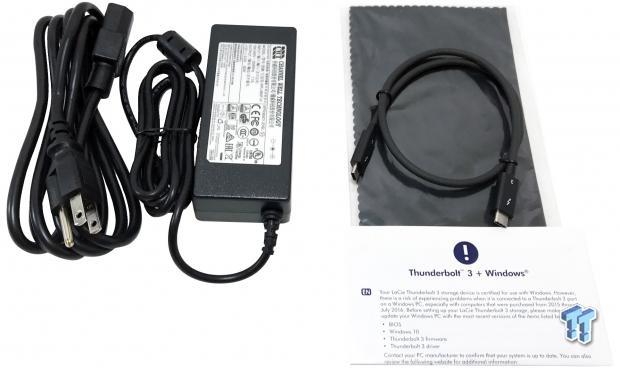
The scope of delivery includes a 60W power adapter, cleaning cloth, and Thunderbolt 3 cable.

A small slip of paper acts as a reminder to make sure your system is updated before connecting the Bolt3.
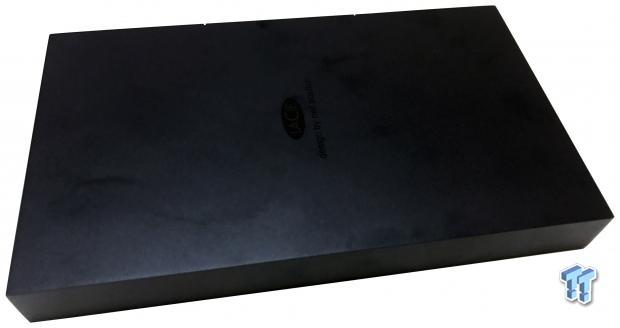
The Bolt3 is a thin matte black enclosure, mostly aluminum. Subtle branding can be seen on the top.
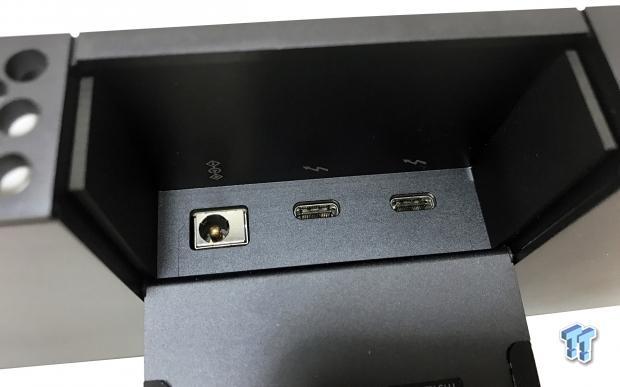
On the backside, there is a small door covering both Thunderbolt 3 ports and the power input.
The Performance

I started off my testing with Flash Benchmark to get an idea of the performance. As you can see from the chart within the benchmark, we started at 2385 MB/s read and held that through 4M. Write performance was pretty steady around 1000 MB/s from 16M to 512K.
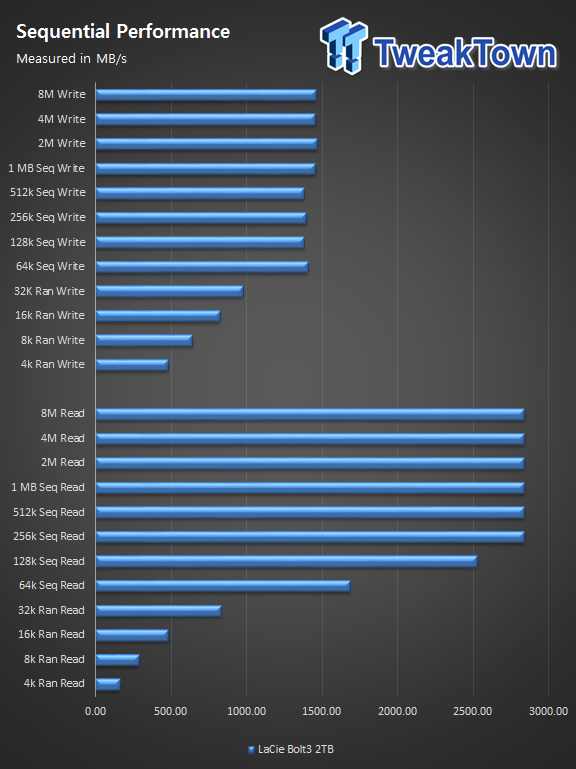
Sequential performance with IOMeter was able to reach 2800 MB/s read from 256K to 8M quite easily. Write performance topped 1300 MB/s easily and took 1400 MB/s for a run.
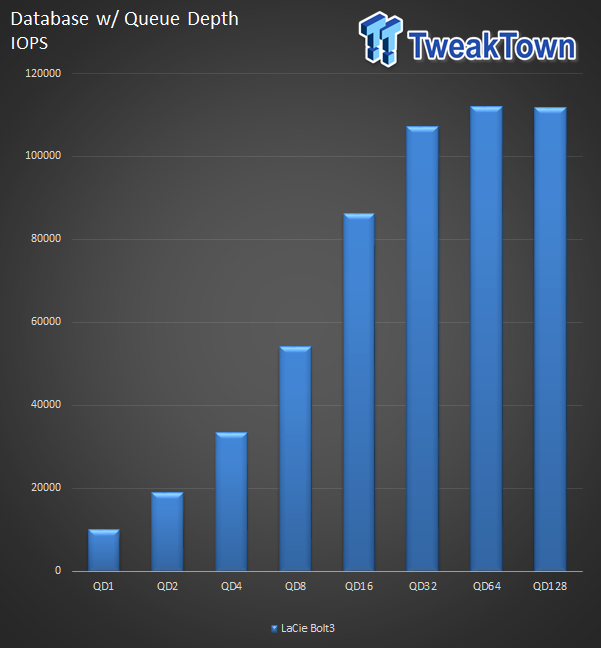
Moving to workloads, I was able to max out the Bolt3 at QD64 that performance held through QD128 at 115K IOPS.
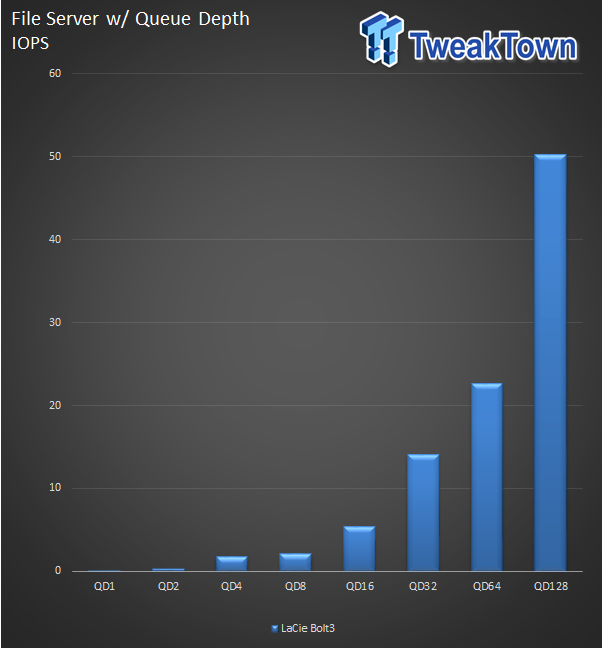
File server proved a slight issue with the Bolt3, bringing in 50 IOPS peak.

I was able to get past 120K IOPS from QD32 to 128 with Email Server.
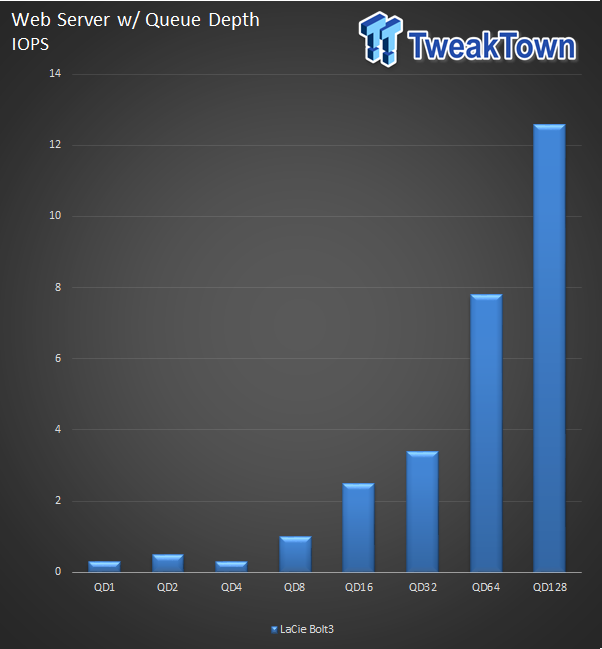
Web Server proved tough as well, reaching just 13 IOPS.

Back to workstation, the Bolt3 was able to jump back and finish on a high note reaching 118K IOPS.
The Conclusion
I had a touch over a week to spend with the Bolt3. While most time was involved with the testing phase, I was impressed at the design. For the most part, I've always enjoyed Neil Poulton products from LaCie and the same can be said for the Bolt3. But what I'm talking about is the internal design that affixes both 1TB SSDs in a pattern where the shell or enclosure becomes the heat sink. Coupled with this is the very powerful magnetic base that cradles the Bolt3 well.
The performance of this solution was spectacular; I can only think of a few devices I have ever had go past 2500 MB/s, let alone reach 2800 MB/s so easily. However, this device uses 4K block size, which is why I think the Web and File Server workloads had such low performance.
As far as the software goes, I did get a chance to use the Genie Backup, and it does a solid job of guiding you through and letting you choose the files and folders you want to be backed up. However, I would like to see a way to image your system and save to a high-performance solution, such as the Bolt3.
In closing, the Bolt3 is amazingly quick at sequential file transfers and looking back, I kind of wish I would have seen what it did in AJASystems Test. It all comes at a price though with its MSRP touching $1999.99, but for those editing 4K and even 6K or 8K video, this solution is sure to increase productivity.
Tyler's Test System Specifications
- Motherboard: ASUS Maximus IX Hero (buy from Amazon)
- CPU: Intel Core i7 7700K (buy from Amazon) / (Read our Review)
- Memory: G.SKILL TridentZ DDR4 3200 (buy from Amazon)
- Video Card: EVGA GeForce GTX 1080 Hybrid (buy from Amazon)
- OS Storage: Intel 730 480GB SSD (buy from Amazon) / (Read our Review)
- Secondary Storage: MyDigitalSSD BP5 512GB SSD (buy from Amazon)
- Case: EVGA DG-86 (buy from Amazon)
- Power Supply: EVGA SuperNOVA 750 P2 (buy from Amazon)
- Networking: ASUS PCE-AC88 AC3100 (buy from Amazon)
- Networking: ASUS ROG 10G Express
- Networking: ASUS Thunderbolt EX3 (buy from Amazon)
- OS: Microsoft Windows 10 (buy from Amazon)

| Performance | 95% |
| Quality | 95% |
| Features | 95% |
| Value | 89% |
| Overall | 94% |
The Bottom Line: LaCie wastes no time setting the bar extremely high for Thunderbolt 3 storage. The Bolt3 is both amazingly quick with its 2800 MB/s transfers, but also boasts high capacity at 2TB.
PRICING: You can find products similar to this one for sale below.
 United
States: Find other tech and computer products like this
over at Amazon.com
United
States: Find other tech and computer products like this
over at Amazon.com
 United
Kingdom: Find other tech and computer products like this
over at Amazon.co.uk
United
Kingdom: Find other tech and computer products like this
over at Amazon.co.uk
 Australia:
Find other tech and computer products like this over at Amazon.com.au
Australia:
Find other tech and computer products like this over at Amazon.com.au
 Canada:
Find other tech and computer products like this over at Amazon.ca
Canada:
Find other tech and computer products like this over at Amazon.ca
 Deutschland:
Finde andere Technik- und Computerprodukte wie dieses auf Amazon.de
Deutschland:
Finde andere Technik- und Computerprodukte wie dieses auf Amazon.de
Similar Content
Related Tags

